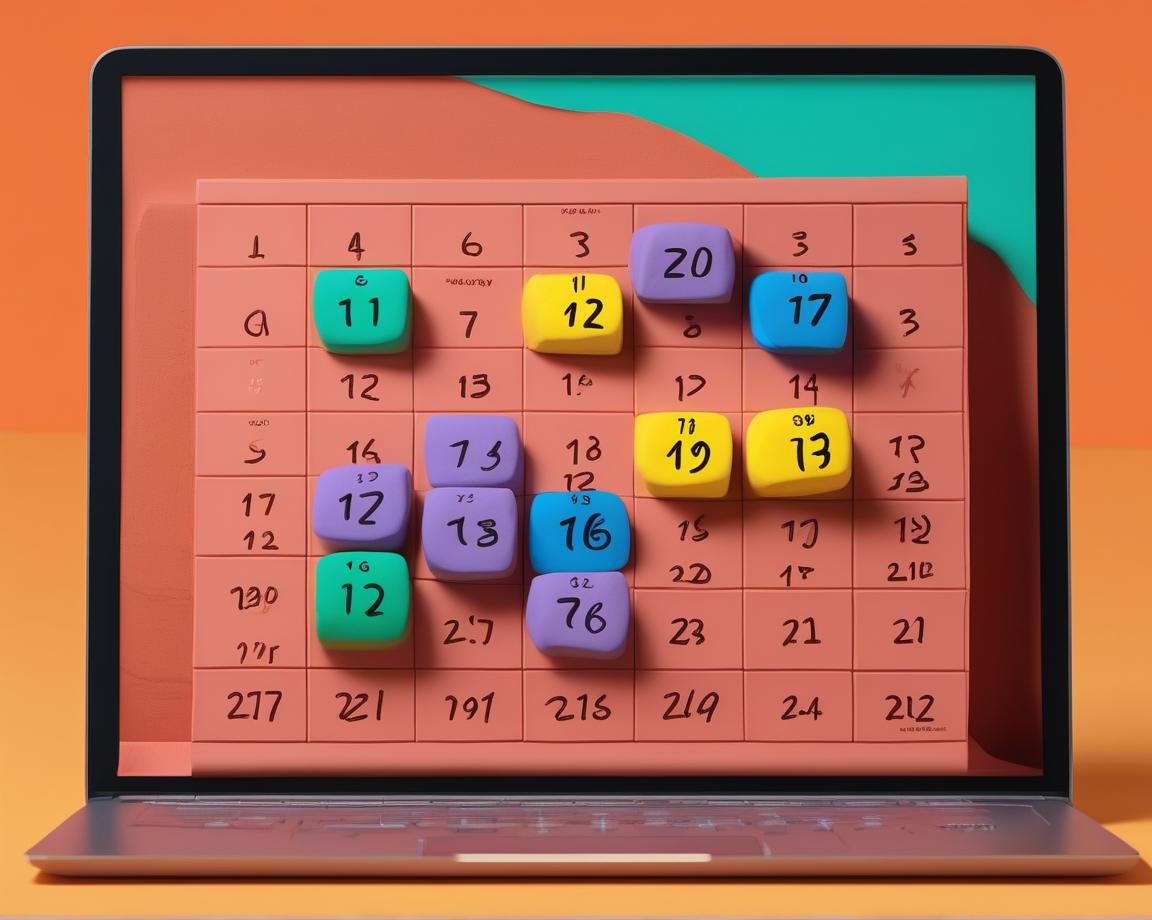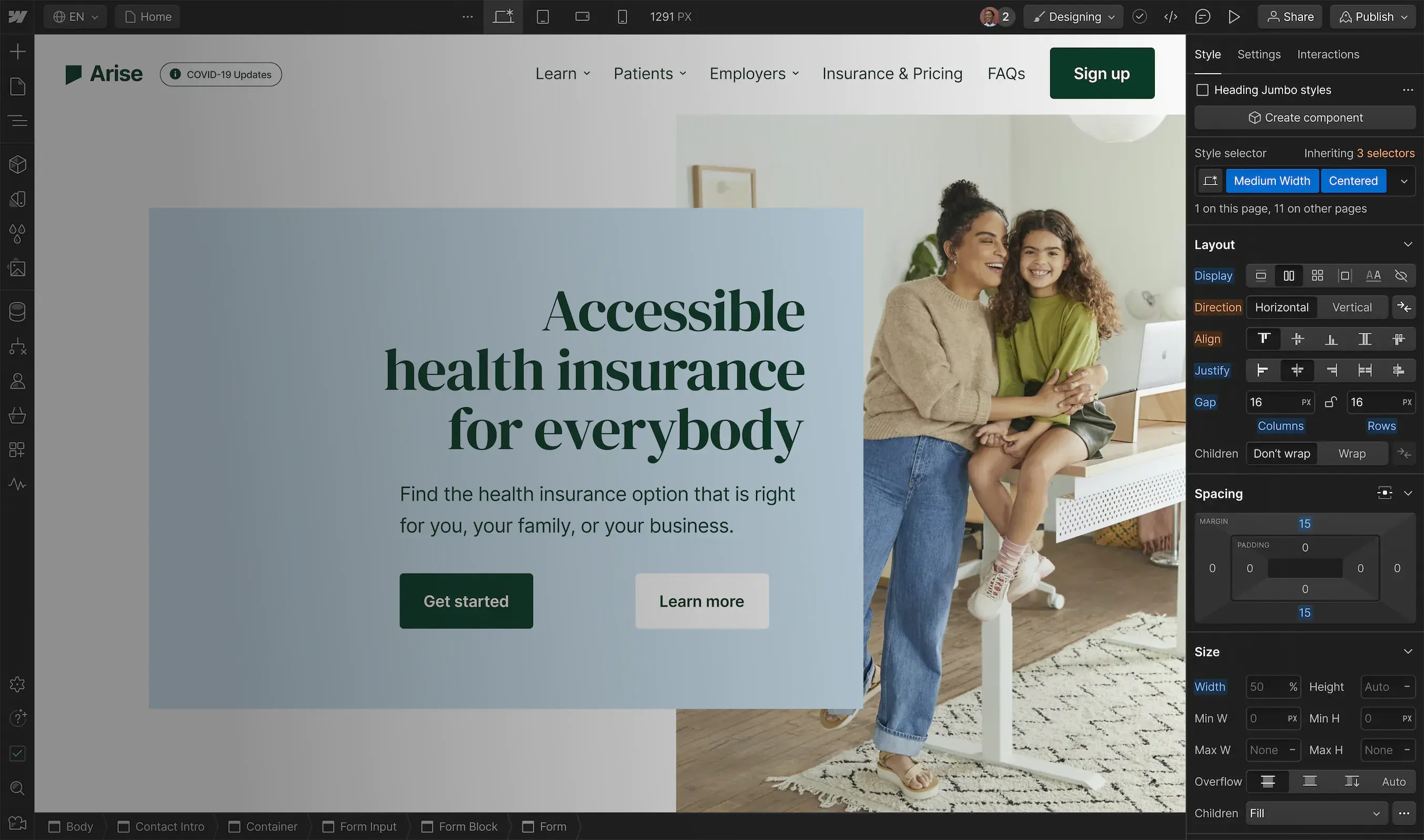Do you have a great SaaS product that sells to small businesses but need help finding leads? Or, maybe you’re a small business trying to reach other local businesses but don’t know where to start.
You're not alone. Most B2B databases have a large gap when it comes to small businesses like HVAC technicians, salons, and restaurants. Thankfully, there's a secret weapon at your fingertips—Google Maps lead generation.
By leveraging place-based searches and scraping Google Maps, you can collect data on thousands of highly targeted, hyperlocal prospects in just one click. Think of niche industries like roofers, solar installers, appliance repair shops, and specialty grocery stores. You know, the businesses rarely on LinkedIn.
We’ll show you how you can find and enrich hundreds of local leads in minutes using Clay’s Google Maps scraper–without needing technical expertise. You’ll gather a wealth of insights like addresses, phone numbers, photos, social media channels, and even customer reviews. Lastly, we’ll show you how to use this data to send personalized outreach that converts.
From lead gen to sales cadences, you’ll learn a lead generation process to dominate niche markets one storefront at a time.
You'll learn:
- How to use a Google Maps scraper to quickly find and research local businesses
- How to enrich data from Google Maps to find contact info for decision-makers
- How Clay can help you quickly compile emails and contact info
- Best practices for crafting tailored outreach campaigns
What businesses use Google Maps for lead generation?
Google Maps is a goldmine for B2B SaaS companies targeting niche small businesses. A few examples of businesses that benefit from the lead generation process we’ll cover include:
- Restaurant tech - Point of sale, inventory management, online ordering, and payment solutions for cafes and eateries.
- Insuretech platforms - Usage-based coverage, on-demand policies, and parametric insurance for small businesses from contractors to liquor stores.
- Beauty biz apps - Scheduling, client management, and booking apps for local salons and spas.
- Delivery logistics - Route optimization, navigation tools for hyper-local shipping and courier services.
- Gym management platforms - Help boutique gym owners collect leads and run email nurturing campaigns.
- HVAC monitoring - Remote sensors and IoT devices to track temps and catch problems before equipment fails.
- Fleet tracking - GPS vehicle trackers, dash cams, and analytics to cut fuel waste and prevent accidents.
- Landscaping bid software - Estimation calculators and proposal generators help landscapers accurately price jobs.
- Contracting project software - digitizing paperwork, staff timesheets, and bidding for electrical and plumbing contractors.
- Physical therapy telehealth software - Virtual visits, remote patient monitoring for outpatient clinics.
How to sell to small, niche, or local businesses
Reaching small and local businesses as a B2B salesperson can be difficult without strong, pre-existing local relationships.
Local businesses often have limited internal teams whose time is primarily dedicated to serving their customers. That leaves little time to evaluate and respond to sales outreach.
High-quality research and personalization are vital when reaching out to a small business owner. Their time is limited, and they’ll likely only respond to outreach that is targeted, efficient, and tailored to their needs.
Up next, we’ll discuss how AI tools like Clay can help you overcome these challenges and connect with local leads from Google Maps to establish valuable long-term partnerships.
How to scrape Google Maps and create a personalized outreach campaign in minutes with Clay
When you’re running an end-to-end local business prospecting process in Clay, there are a few research methods that you can use.
Let’s start with a specific example: local HVAC businesses in the Phoenix, Arizona, area.
1. Build a prospect list of companies by scraping Google Maps
To build your prospect lists in Clay, we’ll use the scraping tool which is called “Find Local Businesses using Google Maps.”

Then, you’ll tell Clay what type of business you’re looking for and where. In this case, we’ve asked Clay for HVAC businesses in the Phoenix, Arizona, area.

Once you’re happy with your search parameters, you can go ahead and ask Clay to add the results to a table—either by creating a new table or adding to an existing table.

Now, the fun begins!
You can see that Clay returned potential customers in the far left-hand corner — 178 target opportunities, to be exact. Plus, it has automatically done data collection on these businesses — capturing business names, Google ratings, number of reviews, phone numbers, or websites.
From here, you can really get creative!
Just like you’d do with typical leads, you can explore a variety of research questions to enrich your lead profiles. That all comes down to your plan to creatively customize and personalize your outreach.
For the sake of simplicity, we’ll say that this is everything we need to know about our local HVAC companies.
That brings us to finding local business owners and their contact information.
2. Use AI to find contact details for your leads from Google Maps
The next crucial step in your process will be figuring out who to contact and how to contact them.
For small or local businesses, this often means finding the business owners and their contact information.
There are a lot of ways to do this manually. But at Clay, we've developed a ready-to-use recipe that lets you find business owners and their contact information in just a couple of clicks. To use it, just search for the SMB's enrichment and configure it to your liking:

This recipe uses our waterfall feature to first identify the owners of the businesses in your list and uses AI to verify that those folks are the right current owners.

Then, it will find and validate their contact information. But it won't just stop there — this recipe will also automatically search for and add the LinkedIn page for each company & owner it finds.

3. Fill in the gaps by scraping websites for email addresses
To make sure that we aren’t leaving any easy-to-reach folks on the table, we’re going to use Clay’s Scrape Website feature to look for any emails listed on their website. We’ll use our input as the website URL, with the output field set to be an email.

This will give us a list of emails, which we now need to validate.

We’ll do that using the Debounce enrichment in Clay. And voila — you now have a clean list of validated emails that you can use to reach these small businesses!

As we mentioned earlier, personalization is really important whenever possible when it comes to local business prospecting. So as our next step, we’re going to use AI to infer the first names of our local business contacts using their emails. We use the following prompt below, with the emails that we just scraped and verified as inputs:

Pro tip: To keep costs low, you can:
- Set a run setting that only runs this if you have a verified contact email
- Try using GPT3.5, rather than GPT4
This yielded us a final list of first names and corresponding email addresses. We can now add these results to the research outputs of our initial research workflow, where we used business owner names to search for emails.

We can now rest assured that we’ve exhausted all of our opportunities to find prospects’ emails and names. We can now confidently begin the process of personalizing our outreach and drafting the language of our campaign!
4. Enrich customer profiles with local business intelligence.
The inbound that local businesses get often far outstrips the resources that they can dedicate to vetting tools or services that could be a great fit.
Directly contacting a business owner and adding as many personal touches as possible is crucial to ensuring your cold outreach stands out in their inbox.
We're venturing into familiar territory if you’ve been using Clay for a while. You can use any of our AI enrichment tools to find customer reviews, social media profiles, job listings, or other relevant details on your prospects. When crafting emails, all the data we’ve gathered will help you stand out and immediately communicate why your product or service can meet your prospects’ needs.
On top of those classic enrichment methods, we will show you how to use Claygent—our AI agent—to quickly capture this potential customer data.
Let’s use recent reviews as an example. Here, we’ll ask Claygent to find and summarize a recent Google or Yelp review for each of our businesses, using their website as the input. We asked it to discover the best review from the last six months and then summarize that review in one sentence and include the reviewer’s first name.
As usual, we only want to run these enrichments on customer profiles we know we’ll be sending an outbound message to to minimize cost.
To do that, ensure your run settings filter for profiles with a validated email.

With that prompt, we got results like this from Claygent:

You can now use this snippet alongside other insights that you get from either Claygent or our more long-standing enrichment tools. When incorporated into your outreach emails, these types of personal touches show your local business prospect that you are in touch with their needs and strengths.
To make the best use of Claygent, come up with clear, creative prompts that yield interesting information. For some helpful tips, check out our complete guide for AI for sales prospecting!
5. Personalize your messages with AI
From here, you’re on the home stretch. You’ve already used Google Maps to identify local leads, used AI to identify and verify owners and their contact information, and built out a rich profile that you can use to personalize your messages.
Now, we’ll just need to put that all to work by drafting email personalizations with Clay's AI integration.
We'll start at the beginning of any email: the greeting. We recommend starting your emails with a friendly greeting and your lead's first name to create a personal connection and show you've done your research.
To automate that, we'll create a new column and use an AI-generated formula to create our greetings:

This will give us a ready-to-use list column of greetings with our business owners' first names. It's a great start to our personalized emails!

We know that personalization is absolutely critical when reaching out to small businesses, so let's take things a step further. Let's use AI to write a one-liner that we'll use to customize our emails.
With Clay, you can do this in seconds using our one-liner recipe, which you can add in as an enrichment column:

And your outputs will look something like this — thoughtful, personal, and sure to grab the attention of even the busiest small business owner.

Pro Tip: For this step, using GPT-4 actually makes quite a difference in the quality of your outreach. Because your first impression is so important, this is a worthwhile place to splurge on using GPT-4.
Instead, keep costs low by setting run conditions. You can set this formula to run only if you have an email for that company. (After all, why write an email if you have nowhere to send it?)
These examples are just the start, and there's lots of room to try your own customizations! To learn more about AI-based personalizations that you might want to include in your campaigns, try some prompts from our guide to AI prospecting.
Other helpful tools for local business prospecting
Because enrichment and personalization play such an important role in local business outreach, Clay is a natural place to conduct your research process.
However, there are ways to capitalize on Clay’s enrichment and personalization while leveraging other tools you might already use for local business prospecting.
D7 Lead Finder and Outscraper are two specific tools that can help you with initial list generation. These are especially good choices if you want to be able to conduct a search across multiple geographies at once since Clay currently only allows you to search one geographic region at once for each search. When you use these sites, your output will be a straightforward list of web pages that match your search parameters (e.g., HVAC in Phoenix, Arizona, and Tucson, Arizona).
Another great — and perhaps unexpected — resource can be the Yellow Pages or Yelp websites. You can search these websites for a business type and location. Once you’ve gotten your results, you can use Instant Data Scraper to extract data from each business’s listing.
After seeing what Clay can do to automate your lead generation process end-to-end, why not give it a try in your own business?
To make things easier, we created a template that will help you do the process we outlined in this post and build your first list in minutes. Create a free account and get started today.
Do you have a great SaaS product that sells to small businesses but need help finding leads? Or, maybe you’re a small business trying to reach other local businesses but don’t know where to start.
You're not alone. Most B2B databases have a large gap when it comes to small businesses like HVAC technicians, salons, and restaurants. Thankfully, there's a secret weapon at your fingertips—Google Maps lead generation.
By leveraging place-based searches and scraping Google Maps, you can collect data on thousands of highly targeted, hyperlocal prospects in just one click. Think of niche industries like roofers, solar installers, appliance repair shops, and specialty grocery stores. You know, the businesses rarely on LinkedIn.
We’ll show you how you can find and enrich hundreds of local leads in minutes using Clay’s Google Maps scraper–without needing technical expertise. You’ll gather a wealth of insights like addresses, phone numbers, photos, social media channels, and even customer reviews. Lastly, we’ll show you how to use this data to send personalized outreach that converts.
From lead gen to sales cadences, you’ll learn a lead generation process to dominate niche markets one storefront at a time.
You'll learn:
- How to use a Google Maps scraper to quickly find and research local businesses
- How to enrich data from Google Maps to find contact info for decision-makers
- How Clay can help you quickly compile emails and contact info
- Best practices for crafting tailored outreach campaigns
What businesses use Google Maps for lead generation?
Google Maps is a goldmine for B2B SaaS companies targeting niche small businesses. A few examples of businesses that benefit from the lead generation process we’ll cover include:
- Restaurant tech - Point of sale, inventory management, online ordering, and payment solutions for cafes and eateries.
- Insuretech platforms - Usage-based coverage, on-demand policies, and parametric insurance for small businesses from contractors to liquor stores.
- Beauty biz apps - Scheduling, client management, and booking apps for local salons and spas.
- Delivery logistics - Route optimization, navigation tools for hyper-local shipping and courier services.
- Gym management platforms - Help boutique gym owners collect leads and run email nurturing campaigns.
- HVAC monitoring - Remote sensors and IoT devices to track temps and catch problems before equipment fails.
- Fleet tracking - GPS vehicle trackers, dash cams, and analytics to cut fuel waste and prevent accidents.
- Landscaping bid software - Estimation calculators and proposal generators help landscapers accurately price jobs.
- Contracting project software - digitizing paperwork, staff timesheets, and bidding for electrical and plumbing contractors.
- Physical therapy telehealth software - Virtual visits, remote patient monitoring for outpatient clinics.
How to sell to small, niche, or local businesses
Reaching small and local businesses as a B2B salesperson can be difficult without strong, pre-existing local relationships.
Local businesses often have limited internal teams whose time is primarily dedicated to serving their customers. That leaves little time to evaluate and respond to sales outreach.
High-quality research and personalization are vital when reaching out to a small business owner. Their time is limited, and they’ll likely only respond to outreach that is targeted, efficient, and tailored to their needs.
Up next, we’ll discuss how AI tools like Clay can help you overcome these challenges and connect with local leads from Google Maps to establish valuable long-term partnerships.
How to scrape Google Maps and create a personalized outreach campaign in minutes with Clay
When you’re running an end-to-end local business prospecting process in Clay, there are a few research methods that you can use.
Let’s start with a specific example: local HVAC businesses in the Phoenix, Arizona, area.
1. Build a prospect list of companies by scraping Google Maps
To build your prospect lists in Clay, we’ll use the scraping tool which is called “Find Local Businesses using Google Maps.”

Then, you’ll tell Clay what type of business you’re looking for and where. In this case, we’ve asked Clay for HVAC businesses in the Phoenix, Arizona, area.

Once you’re happy with your search parameters, you can go ahead and ask Clay to add the results to a table—either by creating a new table or adding to an existing table.

Now, the fun begins!
You can see that Clay returned potential customers in the far left-hand corner — 178 target opportunities, to be exact. Plus, it has automatically done data collection on these businesses — capturing business names, Google ratings, number of reviews, phone numbers, or websites.
From here, you can really get creative!
Just like you’d do with typical leads, you can explore a variety of research questions to enrich your lead profiles. That all comes down to your plan to creatively customize and personalize your outreach.
For the sake of simplicity, we’ll say that this is everything we need to know about our local HVAC companies.
That brings us to finding local business owners and their contact information.
2. Use AI to find contact details for your leads from Google Maps
The next crucial step in your process will be figuring out who to contact and how to contact them.
For small or local businesses, this often means finding the business owners and their contact information.
There are a lot of ways to do this manually. But at Clay, we've developed a ready-to-use recipe that lets you find business owners and their contact information in just a couple of clicks. To use it, just search for the SMB's enrichment and configure it to your liking:

This recipe uses our waterfall feature to first identify the owners of the businesses in your list and uses AI to verify that those folks are the right current owners.

Then, it will find and validate their contact information. But it won't just stop there — this recipe will also automatically search for and add the LinkedIn page for each company & owner it finds.

3. Fill in the gaps by scraping websites for email addresses
To make sure that we aren’t leaving any easy-to-reach folks on the table, we’re going to use Clay’s Scrape Website feature to look for any emails listed on their website. We’ll use our input as the website URL, with the output field set to be an email.

This will give us a list of emails, which we now need to validate.

We’ll do that using the Debounce enrichment in Clay. And voila — you now have a clean list of validated emails that you can use to reach these small businesses!

As we mentioned earlier, personalization is really important whenever possible when it comes to local business prospecting. So as our next step, we’re going to use AI to infer the first names of our local business contacts using their emails. We use the following prompt below, with the emails that we just scraped and verified as inputs:

Pro tip: To keep costs low, you can:
- Set a run setting that only runs this if you have a verified contact email
- Try using GPT3.5, rather than GPT4
This yielded us a final list of first names and corresponding email addresses. We can now add these results to the research outputs of our initial research workflow, where we used business owner names to search for emails.

We can now rest assured that we’ve exhausted all of our opportunities to find prospects’ emails and names. We can now confidently begin the process of personalizing our outreach and drafting the language of our campaign!
4. Enrich customer profiles with local business intelligence.
The inbound that local businesses get often far outstrips the resources that they can dedicate to vetting tools or services that could be a great fit.
Directly contacting a business owner and adding as many personal touches as possible is crucial to ensuring your cold outreach stands out in their inbox.
We're venturing into familiar territory if you’ve been using Clay for a while. You can use any of our AI enrichment tools to find customer reviews, social media profiles, job listings, or other relevant details on your prospects. When crafting emails, all the data we’ve gathered will help you stand out and immediately communicate why your product or service can meet your prospects’ needs.
On top of those classic enrichment methods, we will show you how to use Claygent—our AI agent—to quickly capture this potential customer data.
Let’s use recent reviews as an example. Here, we’ll ask Claygent to find and summarize a recent Google or Yelp review for each of our businesses, using their website as the input. We asked it to discover the best review from the last six months and then summarize that review in one sentence and include the reviewer’s first name.
As usual, we only want to run these enrichments on customer profiles we know we’ll be sending an outbound message to to minimize cost.
To do that, ensure your run settings filter for profiles with a validated email.

With that prompt, we got results like this from Claygent:

You can now use this snippet alongside other insights that you get from either Claygent or our more long-standing enrichment tools. When incorporated into your outreach emails, these types of personal touches show your local business prospect that you are in touch with their needs and strengths.
To make the best use of Claygent, come up with clear, creative prompts that yield interesting information. For some helpful tips, check out our complete guide for AI for sales prospecting!
5. Personalize your messages with AI
From here, you’re on the home stretch. You’ve already used Google Maps to identify local leads, used AI to identify and verify owners and their contact information, and built out a rich profile that you can use to personalize your messages.
Now, we’ll just need to put that all to work by drafting email personalizations with Clay's AI integration.
We'll start at the beginning of any email: the greeting. We recommend starting your emails with a friendly greeting and your lead's first name to create a personal connection and show you've done your research.
To automate that, we'll create a new column and use an AI-generated formula to create our greetings:

This will give us a ready-to-use list column of greetings with our business owners' first names. It's a great start to our personalized emails!

We know that personalization is absolutely critical when reaching out to small businesses, so let's take things a step further. Let's use AI to write a one-liner that we'll use to customize our emails.
With Clay, you can do this in seconds using our one-liner recipe, which you can add in as an enrichment column:

And your outputs will look something like this — thoughtful, personal, and sure to grab the attention of even the busiest small business owner.

Pro Tip: For this step, using GPT-4 actually makes quite a difference in the quality of your outreach. Because your first impression is so important, this is a worthwhile place to splurge on using GPT-4.
Instead, keep costs low by setting run conditions. You can set this formula to run only if you have an email for that company. (After all, why write an email if you have nowhere to send it?)
These examples are just the start, and there's lots of room to try your own customizations! To learn more about AI-based personalizations that you might want to include in your campaigns, try some prompts from our guide to AI prospecting.
Other helpful tools for local business prospecting
Because enrichment and personalization play such an important role in local business outreach, Clay is a natural place to conduct your research process.
However, there are ways to capitalize on Clay’s enrichment and personalization while leveraging other tools you might already use for local business prospecting.
D7 Lead Finder and Outscraper are two specific tools that can help you with initial list generation. These are especially good choices if you want to be able to conduct a search across multiple geographies at once since Clay currently only allows you to search one geographic region at once for each search. When you use these sites, your output will be a straightforward list of web pages that match your search parameters (e.g., HVAC in Phoenix, Arizona, and Tucson, Arizona).
Another great — and perhaps unexpected — resource can be the Yellow Pages or Yelp websites. You can search these websites for a business type and location. Once you’ve gotten your results, you can use Instant Data Scraper to extract data from each business’s listing.
After seeing what Clay can do to automate your lead generation process end-to-end, why not give it a try in your own business?
To make things easier, we created a template that will help you do the process we outlined in this post and build your first list in minutes. Create a free account and get started today.






























































